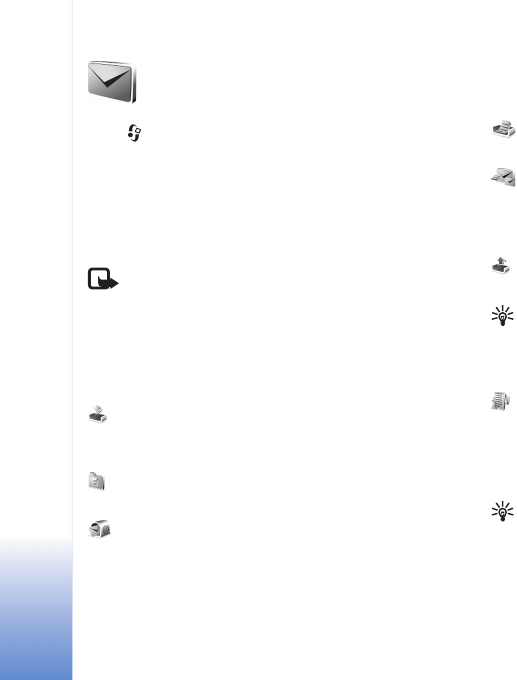
Messaging
50
Copyright © 2005 Nokia. All rights reserved.
Messaging
Press , and select Messag.. In Messag., you can create,
send, receive, view, edit, and organise text messages,
multimedia messages, e-mail messages, and special text
messages containing data. You can also receive messages
and data using Bluetooth connectivity, receive Web
service messages, cell broadcast messages, and send
service commands.
Note: Only devices that have compatible features
can receive and display multimedia messages. The
appearance of a message may vary depending on the
receiving device.
When you open Messag., you can see the New message
function and the following folders:
Inbox—Received messages, except e-mail and cell
broadcast messages, are stored here. E-mail messages are
stored in the Mailbox.
My folders—For organizing your messages into
folders.
Mailbox—Connect to your remote mailbox to
retrieve your new e-mail messages or view your previously
retrieved e-mail messages offline. See ‘E-mail’, p. 63.
Drafts—Draft messages that have not been sent are
stored here.
Sent—The last 20 messages that were sent, excluding
messages sent using Bluetooth connectivity or infrared,
are stored here. To change the number of messages to be
saved, see ‘Other settings’, p. 65.
Outbox—Messages waiting to be sent are temporarily
stored here.
Example: Messages are placed in the outbox when
your device is outside network coverage. You can also
schedule e-mail messages to be sent the next time you
connect to your remote mailbox.
Reports—You can request the network to send you a
delivery report of the text messages and multimedia
messages you have sent (network service). Receiving a
delivery report of a multimedia message that has been sent
to an e-mail address may not be possible.
Tip! When you have opened any of the default folders,
to switch between the folders, move the joystick to the
right or left.
To enter and send service requests (also known as USSD
commands), such as activation commands for network


















